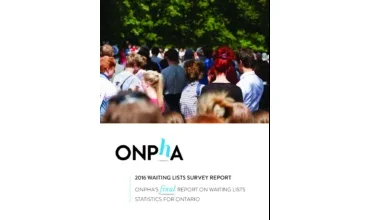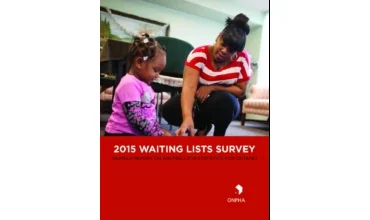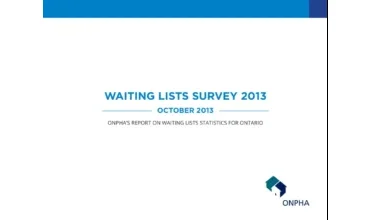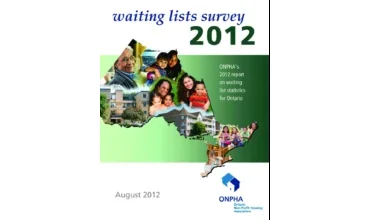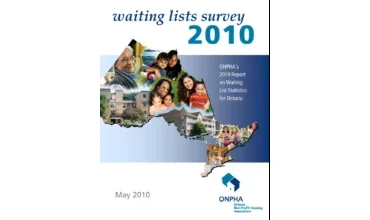Tracking the growing need for affordable homes in Ontario
For years, the demand for affordable housing in Ontario has steadily outpaced supply. This has led to longer waiting lists and increased housing insecurity in the province. We set out to collect data on Ontario’s housing waiting lists to raise awareness of the need for affordable rental housing. We used accurate and previously unavailable data. In 2003, mentions of “affordable housing” – and the social and economic benefits it generates – were absent from newspapers and politicians’ platforms. But over the past decade, the cost of housing in Ontario has emerged as a key policy issue.
ONPHA’s Housing Waiting List Surveys
For over a decade, ONPHA’s Housing Waiting List Surveys provided insights into the increasing demand for affordable housing in Ontario. Our reports tracked the number of households waiting for rent-geared-to-income (RGI) housing, and aimed to provide a comprehensive understanding of the affordable housing landscape in Ontario.
Our research was conducted by distributing a survey to centralized waiting list administrators in Ontario’s 47 Consolidated Municipal Service Manager areas. We collected information on waiting list data, applicant status, local priorities and challenges, and innovative initiatives undertaken.
Key findings
- Soaring waitlists: The waiting lists have grown by more than 45,000 households in 12 years. By 2016, over 171,300 households were waiting for a home they could afford.
- Long wait times: By 2016, applicants faced an average wait of nearly four years. In many communities, the wait is much longer.
- Disparities across regions: While urban areas often face higher demands, rural and remote communities also experience significant housing challenges.
Trends in housing waiting lists in Ontario
Download our Housing Waiting List Survey reports to see how the need for affordable housing grew from 2003 to 2016.
171,360 Ontario families, seniors and single adults and couples were on waiting lists for rent-geared-to-income housing in 2015. Waiting lists have grown by more than 45,000 households in 12 years, and applicants face an average wait of nearly four years. In many communities, the wait is much longer. Read More
Download168,711 Ontario families, seniors, single adults and couples were on waiting lists for rent-geared-to-income housing in 2014. Applicants who were housed in 2014 had waited an average of 3.83 years for RGI housing. In some areas, particularly large cities, waiting times can be much longer – up to ten years. Read More
DownloadIn 2013, 165,069 families, seniors, and individuals were on local waiting lists for RGI housing. That means that 3.17% of all households in Ontario were waiting for an affordable and secure home. The waiting list total rose by 4.2 per cent in 2013, the largest in year-over-year increase since 2010. Read More
DownloadDive deeper into Ontario’s community housing landscape
ONPHA concluded the Housing Waiting List Survey Report series in 2016 due to developments in affordable housing policy and the emergence of new forms of housing assistance that would no longer allow us to accurately compare the growing number of diverse programs being delivered. Explore our other resources for more recent housing trends and our work to support the growth and sustainability of the community housing sector.

